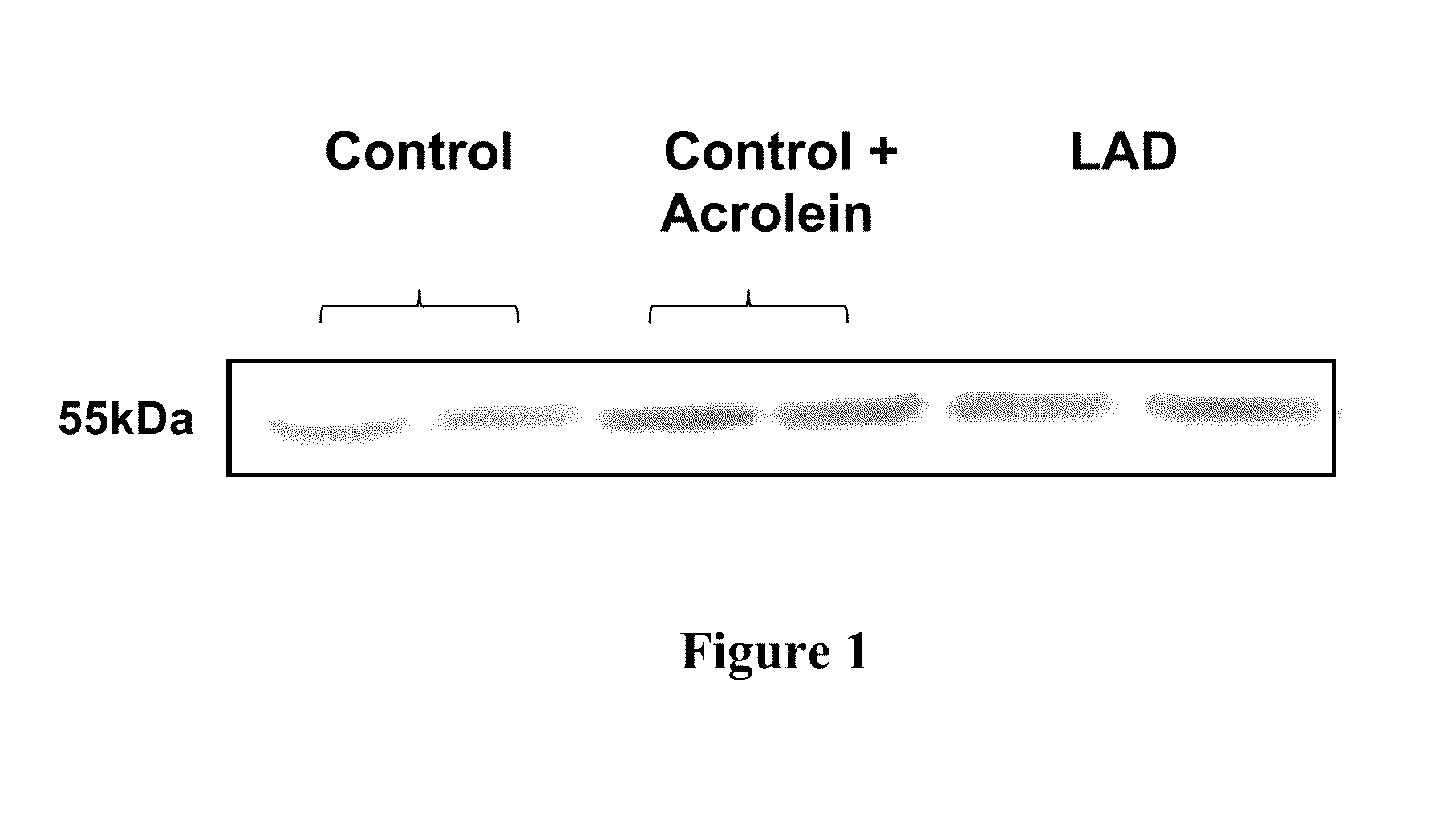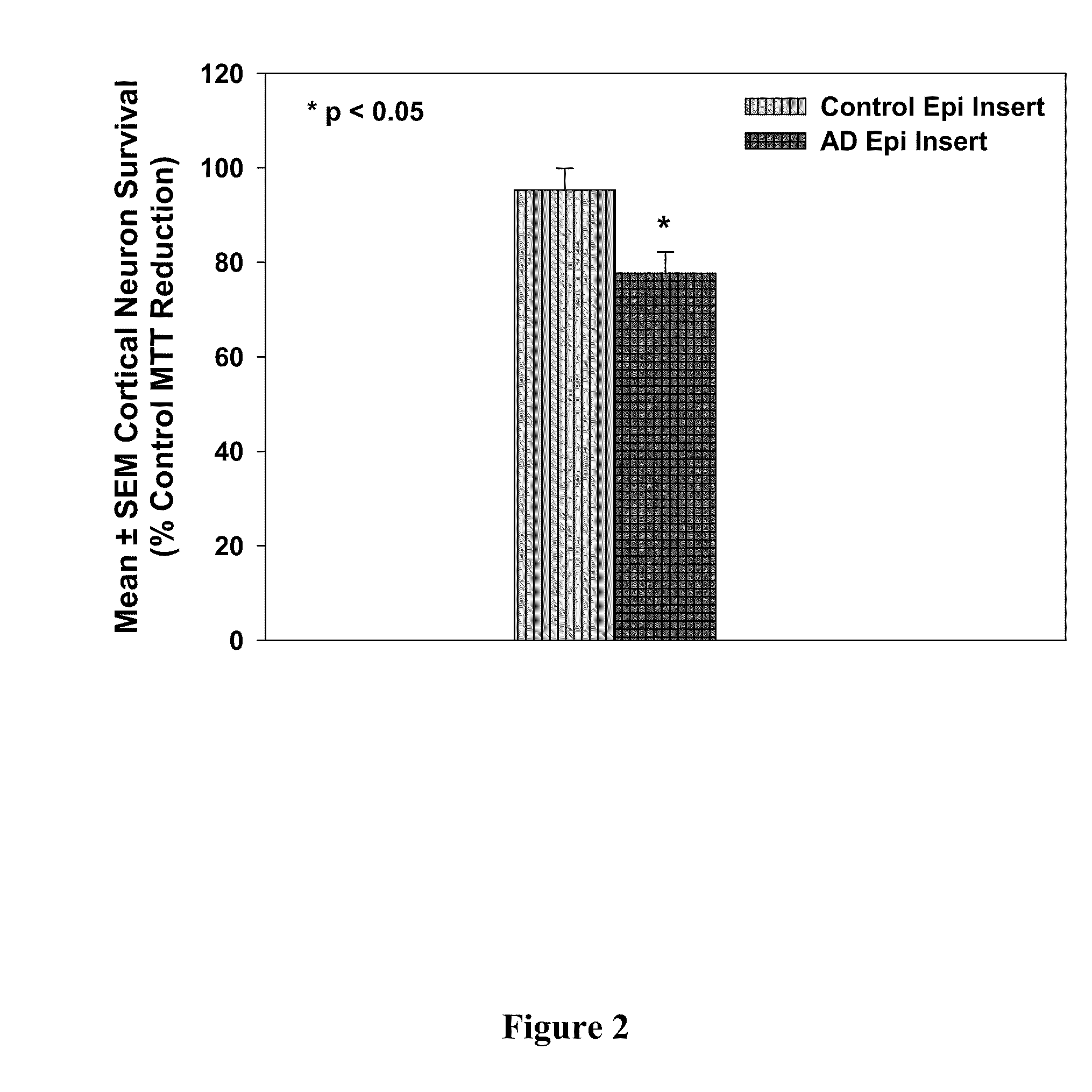Treatment of mci and alzheimer's disease
a technology for alzheimer's disease and mci, which is applied in the field of treatment of mci and alzheimer's disease, can solve the problems of not being able to prevent or slow the underlying nerve degeneration in patients, and no therapy is currently available to forestall the progression of mci to alzheimer's disease, etc., to achieve the effect of inhibiting a1-40 generation, reducing a processing enzymes, and inactivating related biochemical pathways
- Summary
- Abstract
- Description
- Claims
- Application Information
AI Technical Summary
Benefits of technology
Problems solved by technology
Method used
Image
Examples
example 1
Neurotoxic Effect of PDS / TTR Complex
[0217]It has been shown that examination of cell culture medium obtained from epithelial cells derived from Alzheimer's disease patients showed elevated levels of the PDS / TTR complex compared to control cells, indicating that the PDS / TTR complex can be used as an effective biomarker for the early diagnosis of Alzheimer's disease. See, U.S. Application Pub. No. 20080026405, the disclosure of which is incorporated by reference herein. This example shows that in addition to being a biomarker for disease, the PDS / TTR complex is also neurotoxic.
[0218]First of all, it was found that acrolein (an alpha, beta unsaturated three carbon aldehydic by-product of lipid peroxidation) causes normal control epithelial cells to express the PDS / TTR complex into culture medium at comparable levels to the epithelial cells derived from Alzheimer's disease patients. For these experiments, primary cultures of choroid plexus epithelial cells were established from short po...
example 2
Nifedipine, Nifedipine Analog Mix and / or T3 / T4 Inhibit PDS / TTR Expression
[0223]The assays described in Example 1 provide a tool to identify potential therapeutic agents that can protect neuronal cells against the PDS / TTR complex. The inventors observed that compounds such as nifedipine (1,4-dihydro-2,6-dimethyl-4-(2-nitrophenyl)-3,5-pyridinedicarboxylic acid dimethyl ester, CAS#21829-25-4 (Sigma Aldrich)), a calcium channel blocker prescribed for high blood pressure; or nifedipine analogs such as oxidized derivative of nifedipine ((2,6-dimethyl-4-(2-nitrophenyl)-3,5-pyridinedicarboxylic acid dimethyl ester, CAS#67035-22-7 (Sigma Aldrich)) or a nitroso derivative of nifedipine (2,6-dimethyl-4-(2-nitrosophenyl)-3,5-pyridinedicarboxylic acid dimethyl ester, CAS#50428-14-3 (Sigma Aldrich)), can effectively inhibit the expression of PDS / TTR complex in cell culture, individually or in combination. In addition, T3 and T4 were also evaluated and found to be effective in inhibiting the expre...
example 3
Nifedipine Analogs Inhibit Inflammatory Cytokine Production
[0228]It was reported that inflammatory response elements (cytokines) are elevated in Alzheimer's disease patients. The inventors tested the nifedipine mix and individual analogs in astrocytoma cultures. Human astrocytoma cells were plated at 2.5×105 cells / well in 6 well culture plates and were grown for 24 hours. Cultures were then switched to serum free Opti-MEM and treated with the nifedipine mixture and individual analogs for 24 hours. Three 6-well plates were subjected to each treatment. Following treatment, medium was collected from each well and levels of IL-1β, IL-6, TNF-α and TGF-β were measured using commercially available ELISAs. Exemplary results are shown in FIG. 7. As can be seen from FIG. 7, IL-1, IL-6 and TNF-α secreted in the medium were significantly reduced with the treatment of nifedipine mix or oxidized nifedipine, indicating these compounds have a direct positive effect on neuroinflammation.
PUM
| Property | Measurement | Unit |
|---|---|---|
| Mass ratio | aaaaa | aaaaa |
| Toxicity | aaaaa | aaaaa |
Abstract
Description
Claims
Application Information
 Login to View More
Login to View More - R&D
- Intellectual Property
- Life Sciences
- Materials
- Tech Scout
- Unparalleled Data Quality
- Higher Quality Content
- 60% Fewer Hallucinations
Browse by: Latest US Patents, China's latest patents, Technical Efficacy Thesaurus, Application Domain, Technology Topic, Popular Technical Reports.
© 2025 PatSnap. All rights reserved.Legal|Privacy policy|Modern Slavery Act Transparency Statement|Sitemap|About US| Contact US: help@patsnap.com



